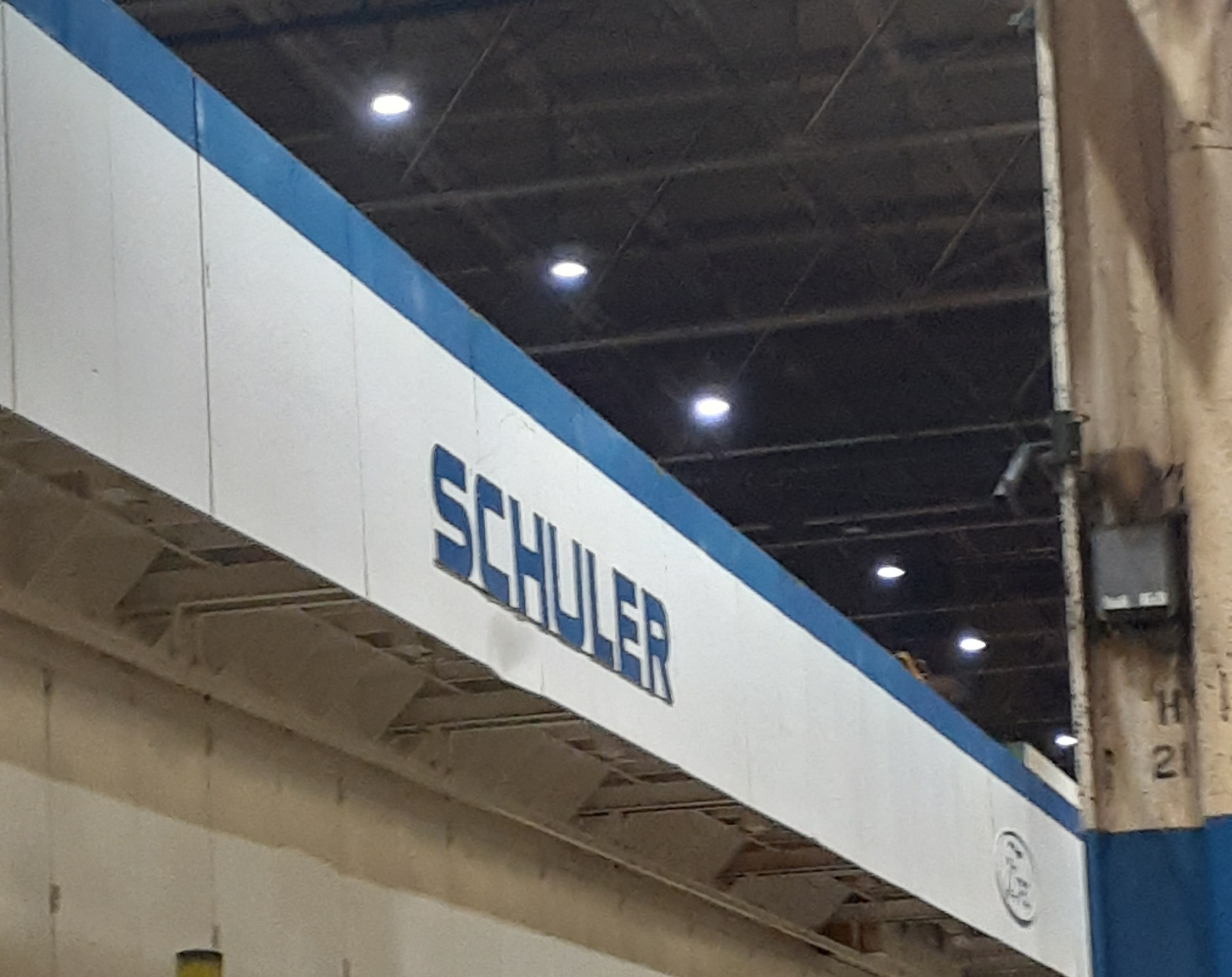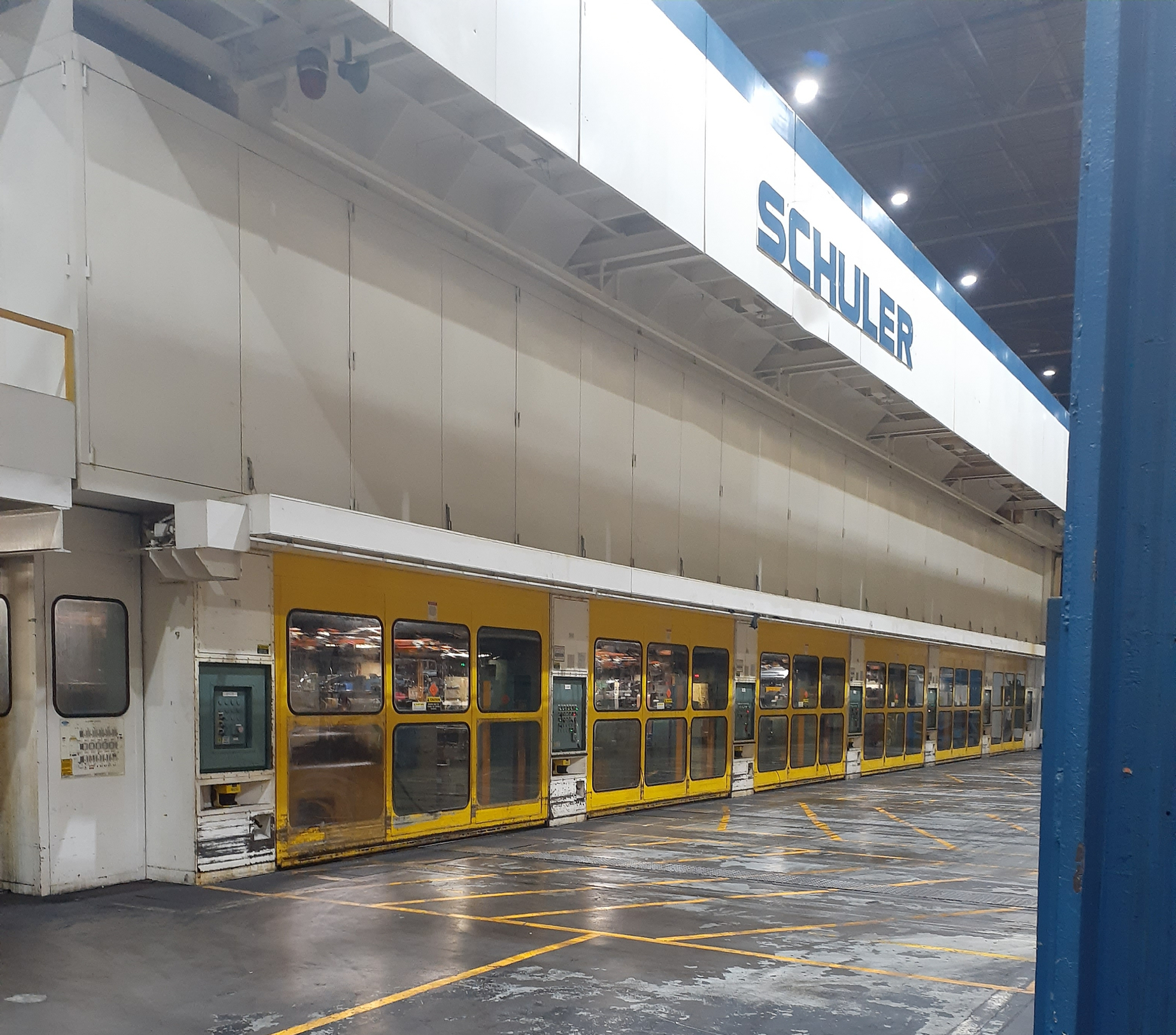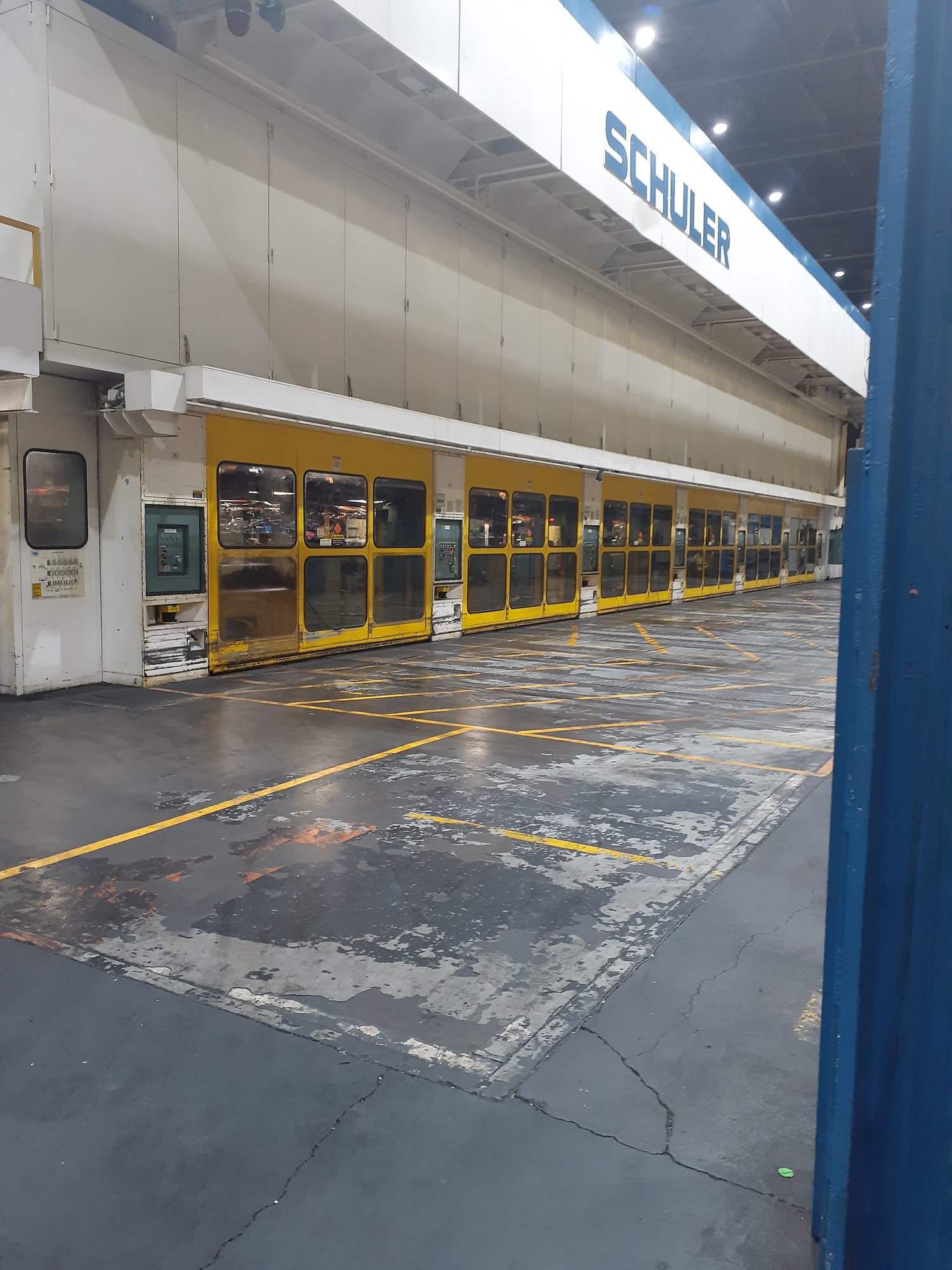It's one to see in person to figure out. Interesting coin.
On the one hand, the die appears to be ground down or marred somehow, and on the other hand an odd looking strike through I think is still possible (the "weakness" on the opposing side, on the obverse, could simply be the "strike through" substance that was on both dies.)
A damaged die is far less common than a common strike thru, and especially looking as severe as this one, but it is unusual looking for a strike thru.
Got the technical info back from the press manufacturer. Very nice people.
Both the horizontal stroke and the vertical stroke presses use a "dial feed plate," as Fred said on 9-16 at 1:40 PM my time. Think of an old-fashioned rotary phone dial where the holes go all the way around the dial, but are open on their outer sides. Each opening (I would call it a bay, but I do not know what the manufacturer calls it) seems to be at the end of an independent, elongated pie-shaped segment, so maybe the segments push out and then retract at some point in the rotation of the dial.
The dials that are mounted vertically (on a horizontal stroke press) can only make round solid coins. Odd-shaped or bi-metallic or tri-metallic coins need to be struck on a vertical stroke press with a horizontal feed plate. Bi-metallic planchets are assembled there by specialized machinery.
On the horizontal stroke press the feed mechanism (which BTW includes a mechanism to automatically divert planchets that are too large or too thick) brings each planchet down a curved slide that deposits it into one of the bays of the vertical feed plate just before the die setup. The dial advances and stops, bringing the planchet in front of the hammer die, which is very close to the dial. Hammer die pushes forward, shoving planchet into a collar and against the anvil die, striking it. The hammer die retracts just beyond the dial and the anvil die pushes the coin out of the collar and back onto the bay. The dial advances, and after a few advances the struck coin falls into an exit tube.
I am assuming that the hammer die must be the backstop that prevents the just-struck coin from overshooting the dial and falling into the bottom of the coin press. To do this, it must be fairly close to the dial. If one of the ends of one of the segments were to become damaged and bent outwards a bit, it could scrape against the SIDE of the die every time that segment came around. If the problem were that the hammer die was not retracting far enough, then every end of every segment could impact the SIDE of the die.
Assuming that this reverse die was the hammer die, and that it was mounted and aligned up and down within the die holder, then the "dial feed plate" could hit the die at the location of the damage on this die. You could call it "feed finger damage," but I am going to propose a new class of die damage to be called "dial plate damage." What do you think?
TD
Numismatist. 50 year member ANA. Winner of four ANA Heath Literary Awards; three Wayte and Olga Raymond Literary Awards; Numismatist of the Year Award 2009, and Lifetime Achievement Award 2020. Winner numerous NLG Literary Awards.
I never knew those intricacies of the striking process on the vertical stroke presses.
Fascinating information.
Like a modern car the more intricate the more things can go awry. My ignorance of the striking process was really off.
A dial plate. Makes sense. And means there might be more examples out there. I do have a dozen or so unopened 2002 rolls that I may have to dig out and open
And the analogy to an old rotary phone puts it in perspective.
Thanks for sharing this info TD as it is really eye opening and helps with the mystique of that split second striking of the coin.
Must be awesome to watch the process occur.
Kudos.
Offset Pressman 45 yrs, (Paper) and I'm gonna study you explanation in depth.
Sounds very similar in the feeding systems of both stock, so to say.
Keep this going and, "I'll Be Back"
Thank You.
Comments
Hey, "Schuler Presses"? Like this one where I work with everyday? Lol




In this case, cars, instead of coins. Lol
"Jesus died for you and for me, Thank you,Jesus"!!!
--- If it should happen I die and leave this world and you want to remember me. Please only remember my opening Sig Line.It's one to see in person to figure out. Interesting coin.
On the one hand, the die appears to be ground down or marred somehow, and on the other hand an odd looking strike through I think is still possible (the "weakness" on the opposing side, on the obverse, could simply be the "strike through" substance that was on both dies.)
A damaged die is far less common than a common strike thru, and especially looking as severe as this one, but it is unusual looking for a strike thru.
Got the technical info back from the press manufacturer. Very nice people.
Both the horizontal stroke and the vertical stroke presses use a "dial feed plate," as Fred said on 9-16 at 1:40 PM my time. Think of an old-fashioned rotary phone dial where the holes go all the way around the dial, but are open on their outer sides. Each opening (I would call it a bay, but I do not know what the manufacturer calls it) seems to be at the end of an independent, elongated pie-shaped segment, so maybe the segments push out and then retract at some point in the rotation of the dial.
The dials that are mounted vertically (on a horizontal stroke press) can only make round solid coins. Odd-shaped or bi-metallic or tri-metallic coins need to be struck on a vertical stroke press with a horizontal feed plate. Bi-metallic planchets are assembled there by specialized machinery.
On the horizontal stroke press the feed mechanism (which BTW includes a mechanism to automatically divert planchets that are too large or too thick) brings each planchet down a curved slide that deposits it into one of the bays of the vertical feed plate just before the die setup. The dial advances and stops, bringing the planchet in front of the hammer die, which is very close to the dial. Hammer die pushes forward, shoving planchet into a collar and against the anvil die, striking it. The hammer die retracts just beyond the dial and the anvil die pushes the coin out of the collar and back onto the bay. The dial advances, and after a few advances the struck coin falls into an exit tube.
I am assuming that the hammer die must be the backstop that prevents the just-struck coin from overshooting the dial and falling into the bottom of the coin press. To do this, it must be fairly close to the dial. If one of the ends of one of the segments were to become damaged and bent outwards a bit, it could scrape against the SIDE of the die every time that segment came around. If the problem were that the hammer die was not retracting far enough, then every end of every segment could impact the SIDE of the die.
Assuming that this reverse die was the hammer die, and that it was mounted and aligned up and down within the die holder, then the "dial feed plate" could hit the die at the location of the damage on this die. You could call it "feed finger damage," but I am going to propose a new class of die damage to be called "dial plate damage." What do you think?
TD
I never knew those intricacies of the striking process on the vertical stroke presses.
Fascinating information.
Like a modern car the more intricate the more things can go awry. My ignorance of the striking process was really off.
A dial plate. Makes sense. And means there might be more examples out there. I do have a dozen or so unopened 2002 rolls that I may have to dig out and open
And the analogy to an old rotary phone puts it in perspective.
Thanks for sharing this info TD as it is really eye opening and helps with the mystique of that split second striking of the coin.
Must be awesome to watch the process occur.
Kudos.
Offset Pressman 45 yrs, (Paper) and I'm gonna study you explanation in depth.
Sounds very similar in the feeding systems of both stock, so to say.
Keep this going and, "I'll Be Back"
Thank You.